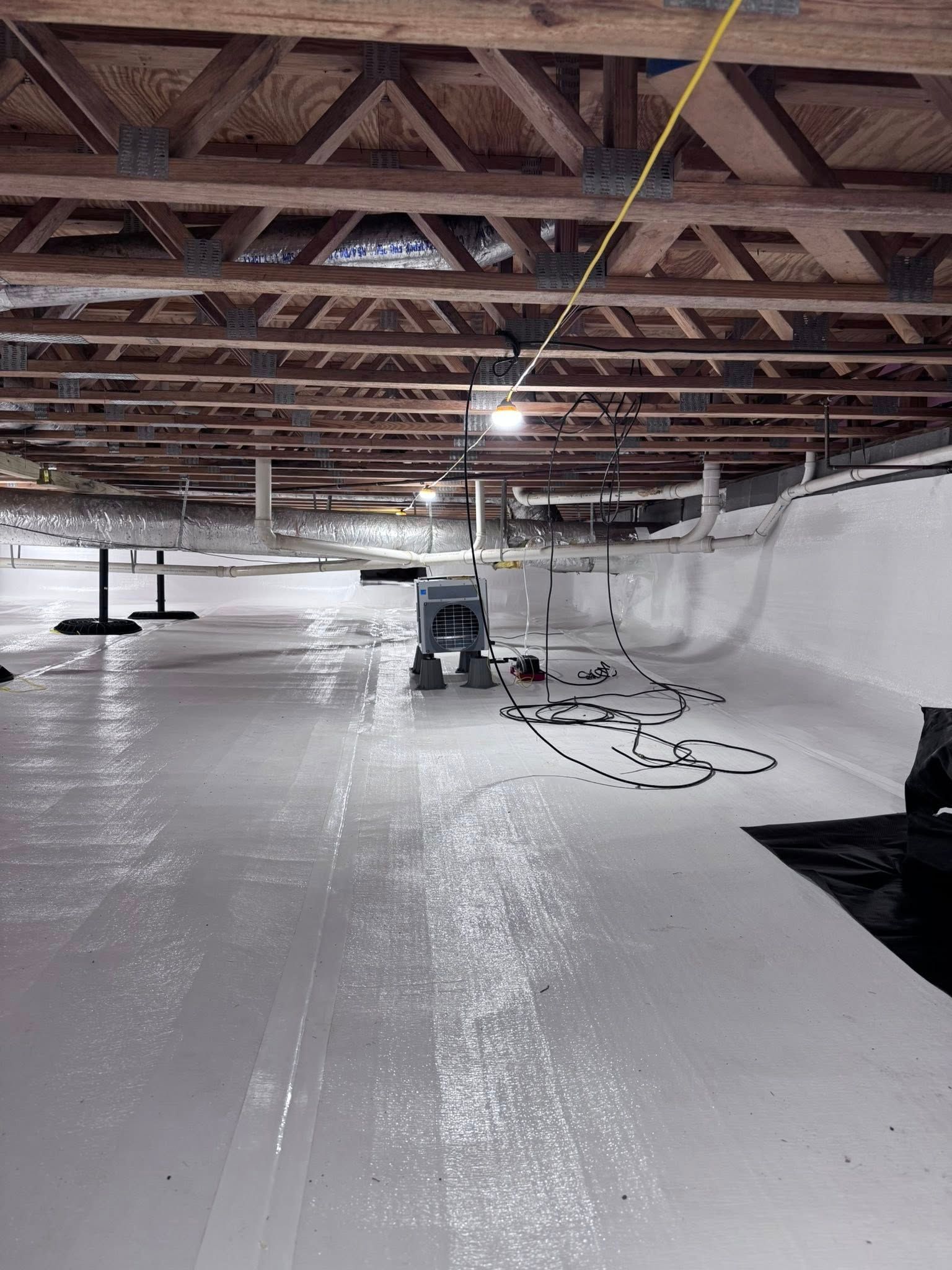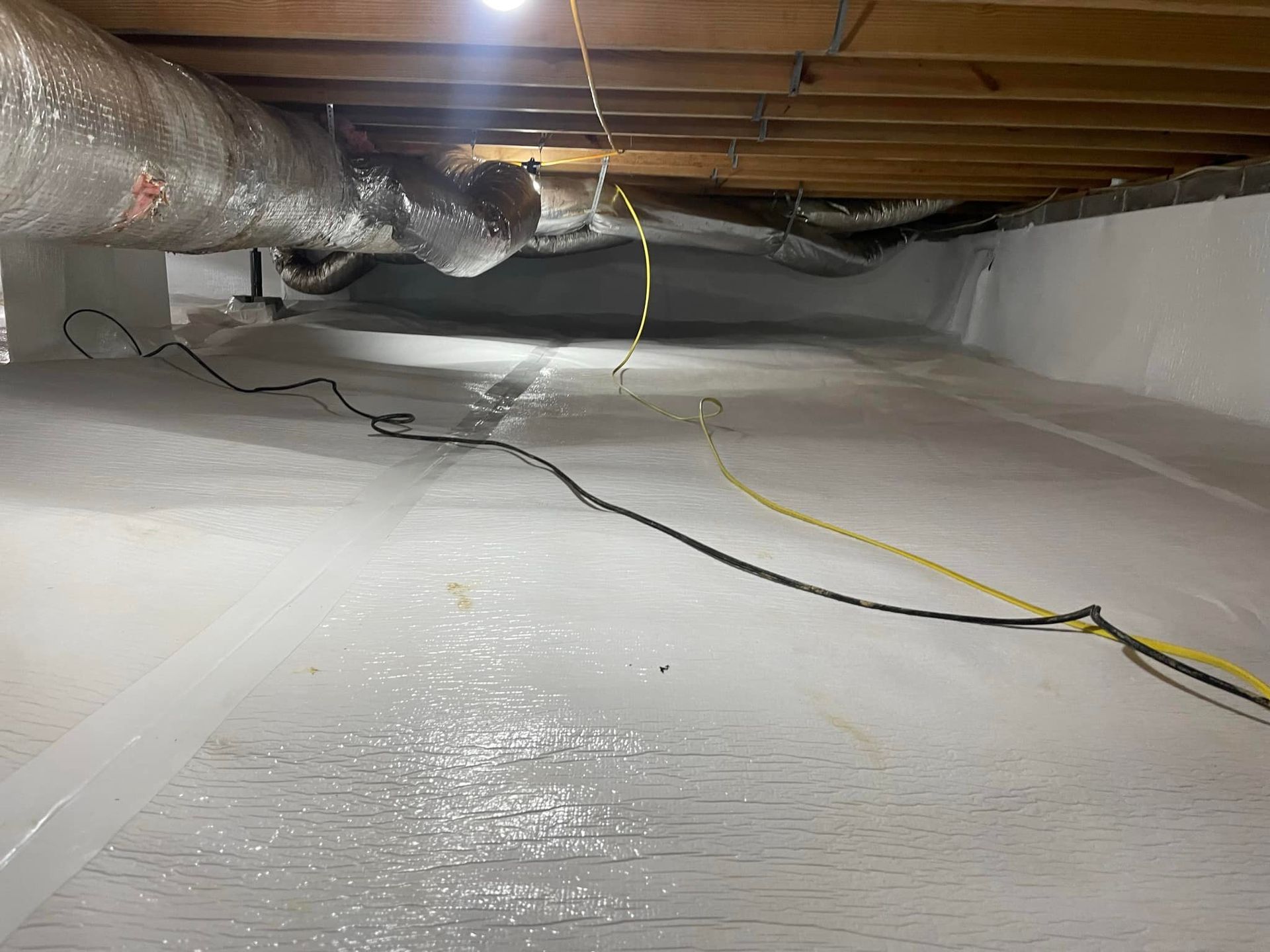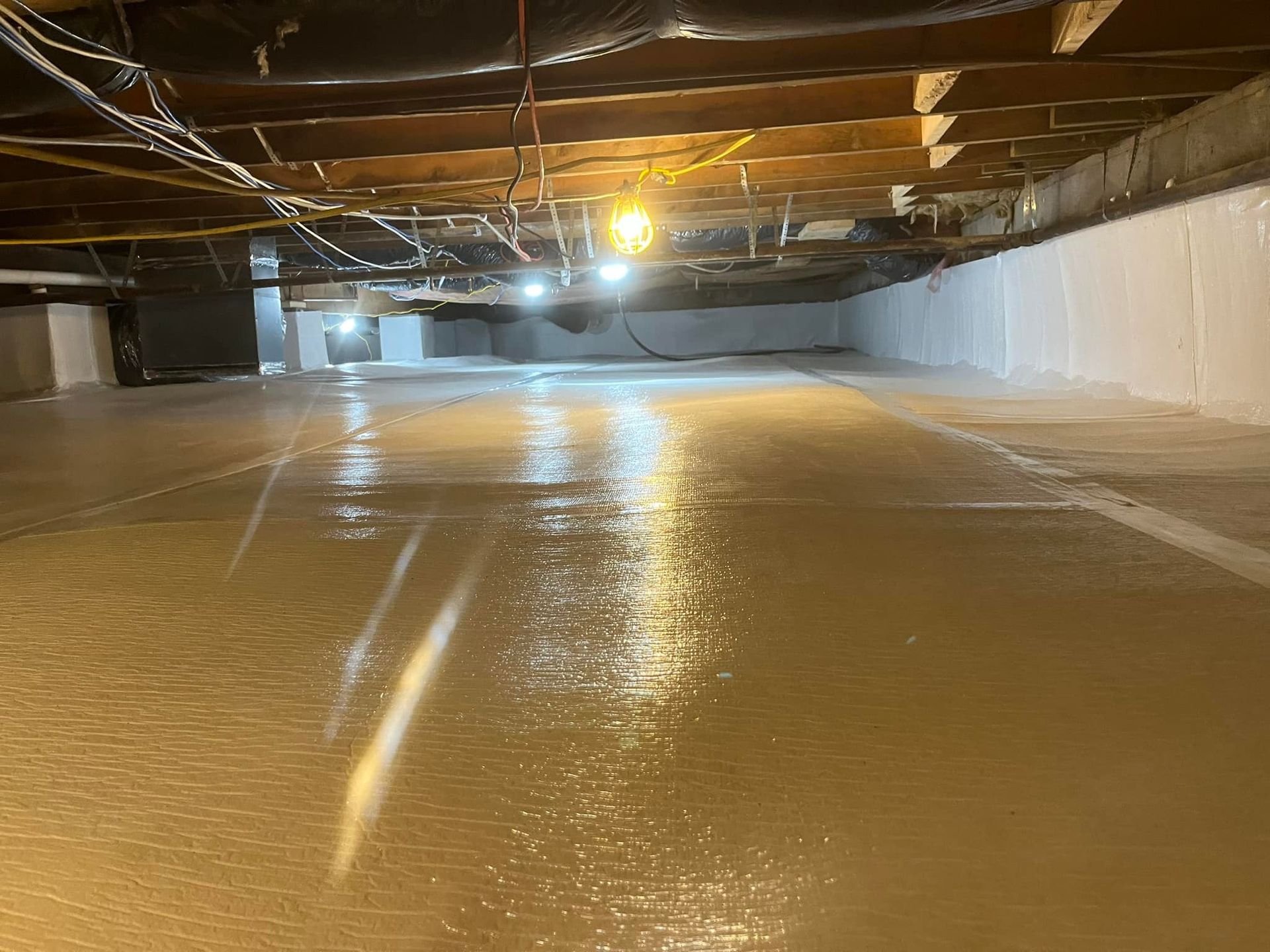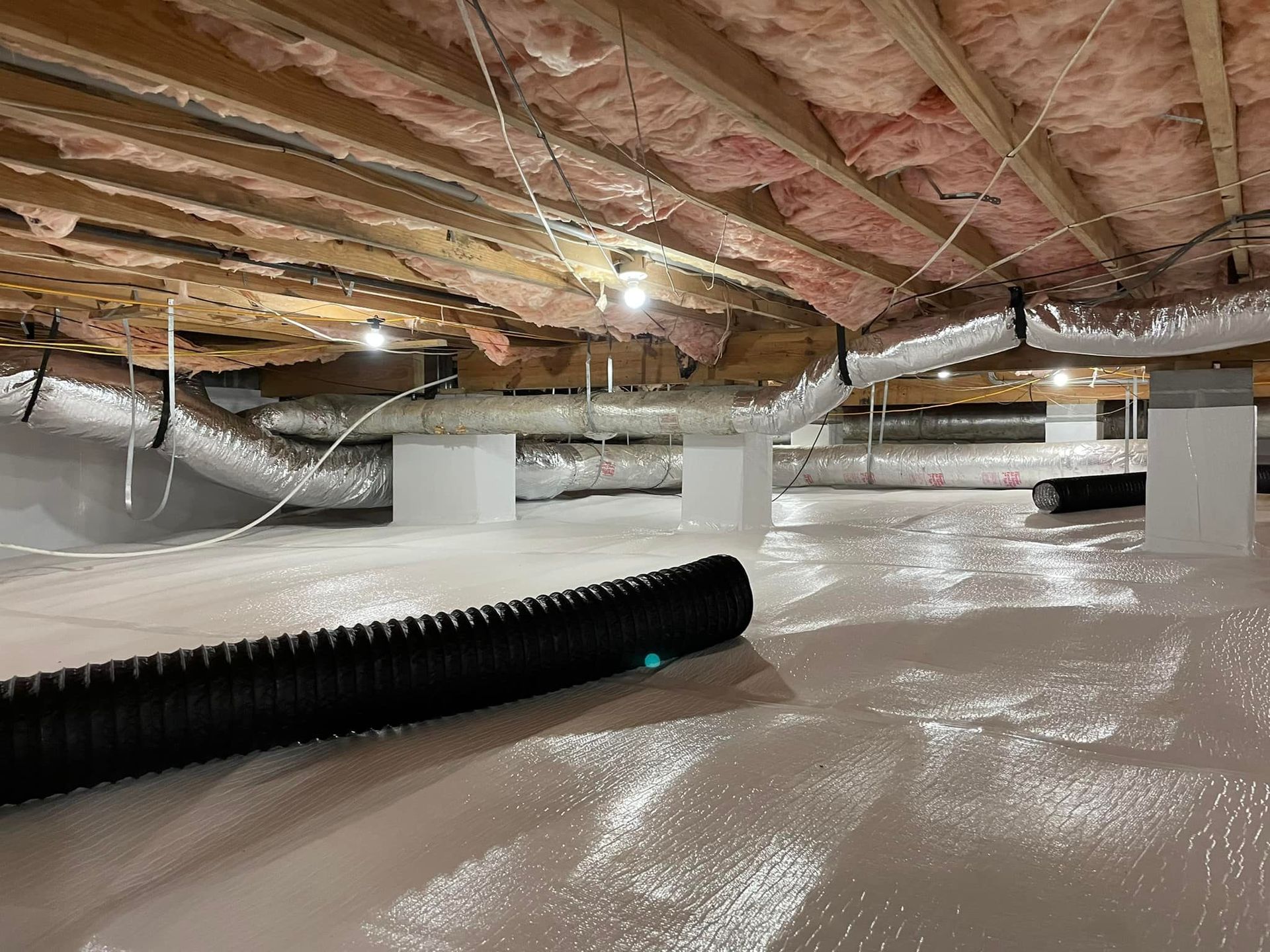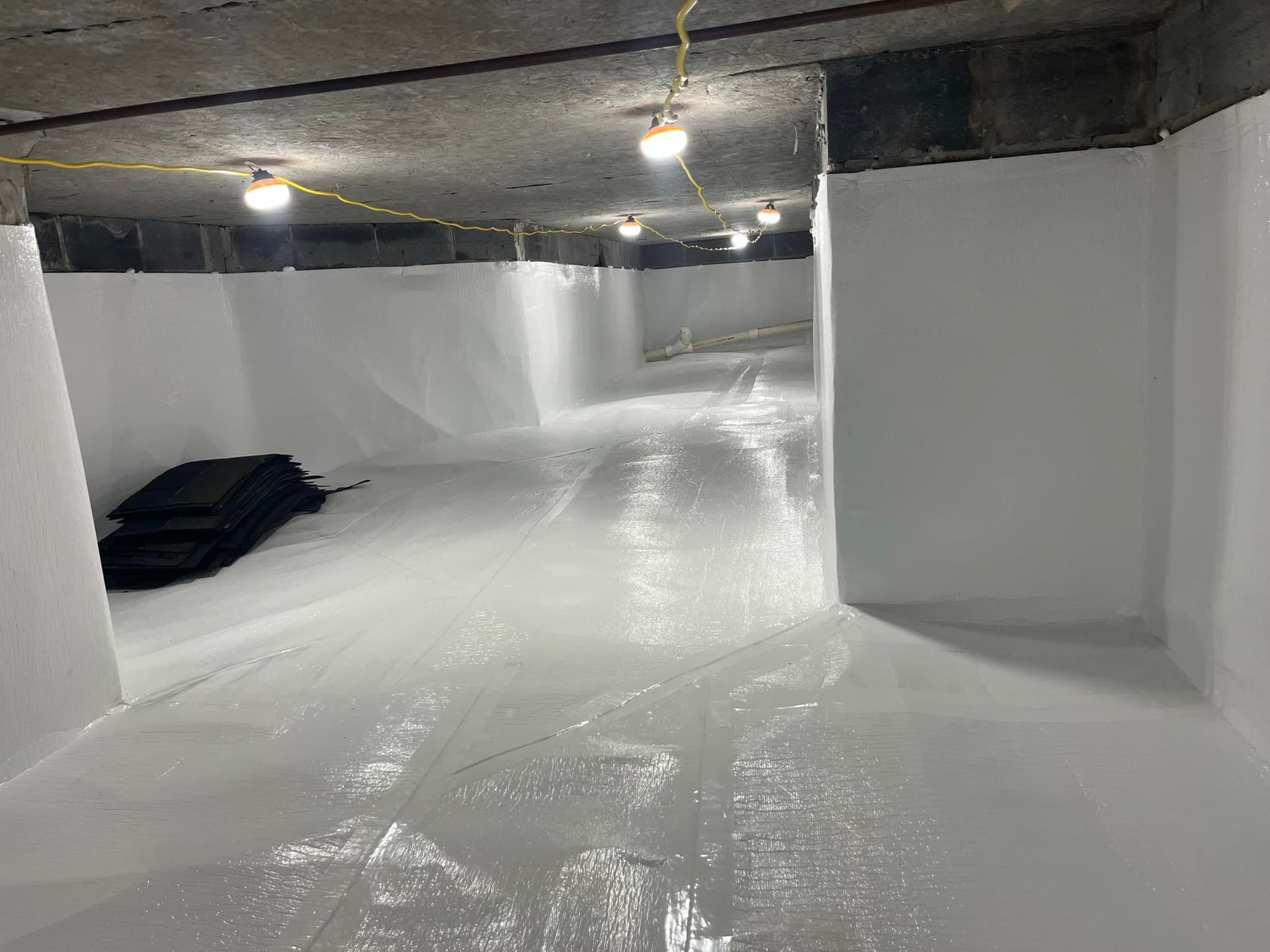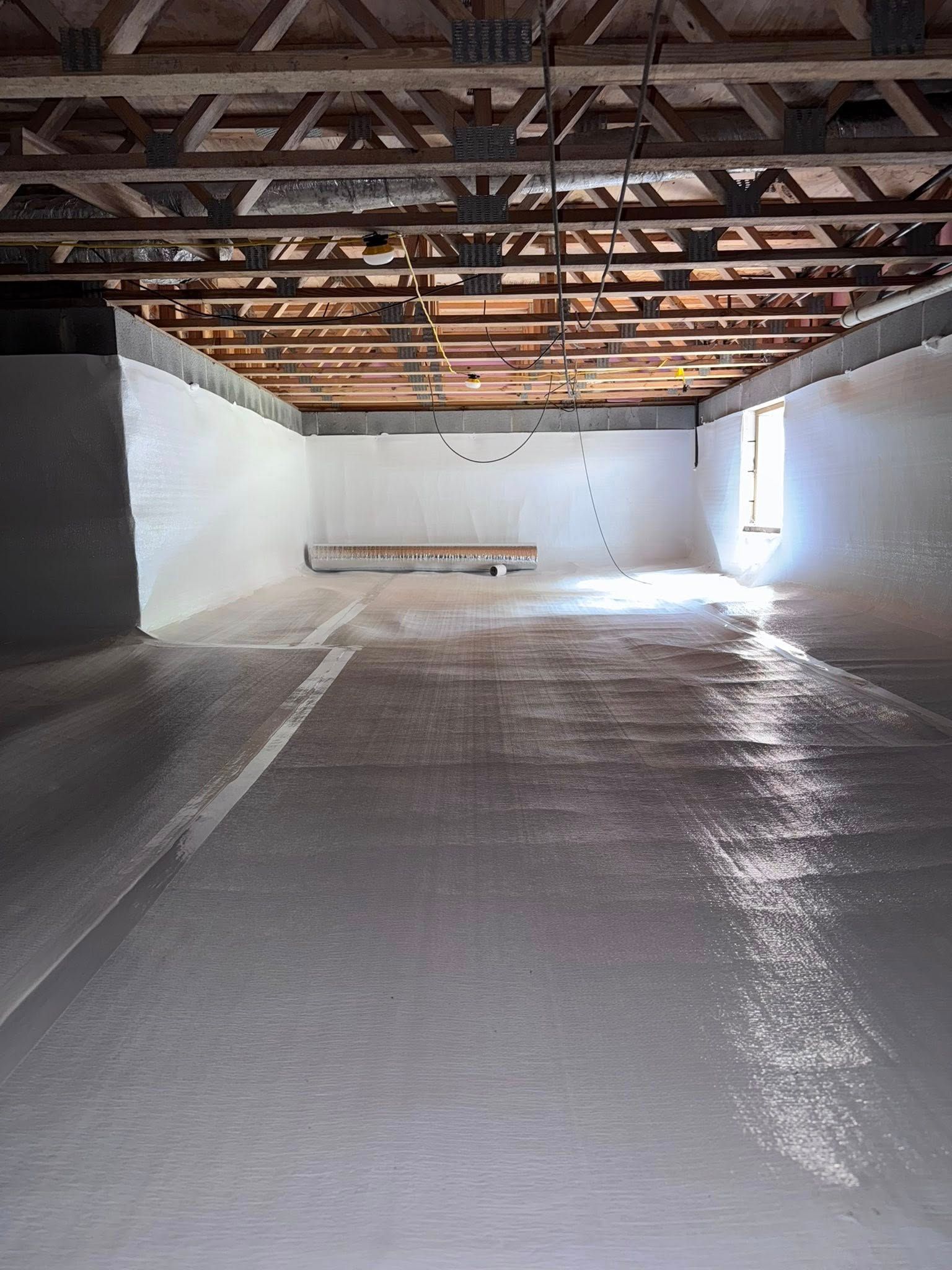Why Your New Home's Crawl Space Could Be Hiding Dangerous Moisture Issues
That New Home Warranty Won't Help If You Miss These Warning Signs
A professional crawl space inspector reveals why new construction isn't immune to moisture problems
"I don't think I have any major issues down there - it's a newer house." I hear this almost every day from homeowners, and I understand why they think that.
New construction feels safe, protected, problem-free.
But what I found in a crawl space just today tells a different story.
Under this newer home, fungal growth is already spreading across floor joists.
Even the homeowner's stored doors and lumber - items that haven't been there long - are covered in fungus.
This isn't an isolated case.
New homes can develop serious moisture issues before the paint's even fully dried.
The problem? Most people don't know what to look for, and by the time they notice something's wrong, they're facing expensive repairs that their home warranty won't cover.
The Science Behind Your Crawl Space Problems
Here's what's actually happening under your new home: Every time warm, humid air enters through your crawl space vents during spring, summer, and fall, it meets the naturally cool environment under your house. This creates a perfect storm of moisture problems.
Let me break down the science: For every single degree that warm air cools in your crawl space, the relative humidity jumps 2.2%. This isn't just a random number - it's a law of physics that affects every home, no matter how new.
What does this mean for you? When that humid summer air hits your cool crawl space:
- Moisture condenses on your floor joists
- Your ductwork starts sweating
- Stored items become breeding grounds for fungus
- Wood moisture content rises to dangerous levels
This isn't theoretical - I see the results every day. Even in homes just a few years old, this constant moisture cycle creates conditions perfect for fungal growth, wood decay, and even termite activity.
Silent Dangers in Your New Construction
What I found today perfectly illustrates how quickly problems can develop. Those doors and lumber the homeowner stored in their crawl space? Already covered in fungus. This happens because most people assume a new home's crawl space is safe for storage. It's not.
Here's what's happening while you're not looking:
- Fungal growth starts spreading across wooden surfaces
- Your floor joists absorb excess moisture
- Insulation begins deteriorating
- Stored items become damaged
- Wood moisture content rises to levels that attract termites
The worst part? These issues often develop silently until they become major problems.
Why Traditional Venting Sets Your Home Up for Failure
Here's something that surprises most homeowners: those vents in your crawl space? They're actually working against you. In this home I inspected today, open vents during spring, summer, and fall are the biggest problem.
Think about it: Outside air in our area is hot and humid. Your crawl space stays relatively cool year-round. When these two environments meet, you get condensation - just like a cold glass of water on a hot summer day. Your crawl space vents are essentially inviting moisture problems into your home.
Without a proper vapor barrier and moisture control system, those vents are:
- Letting in humid air that condensates
- Creating perfect conditions for fungal growth
- Setting up long-term moisture problems
- Putting your home's structure at risky
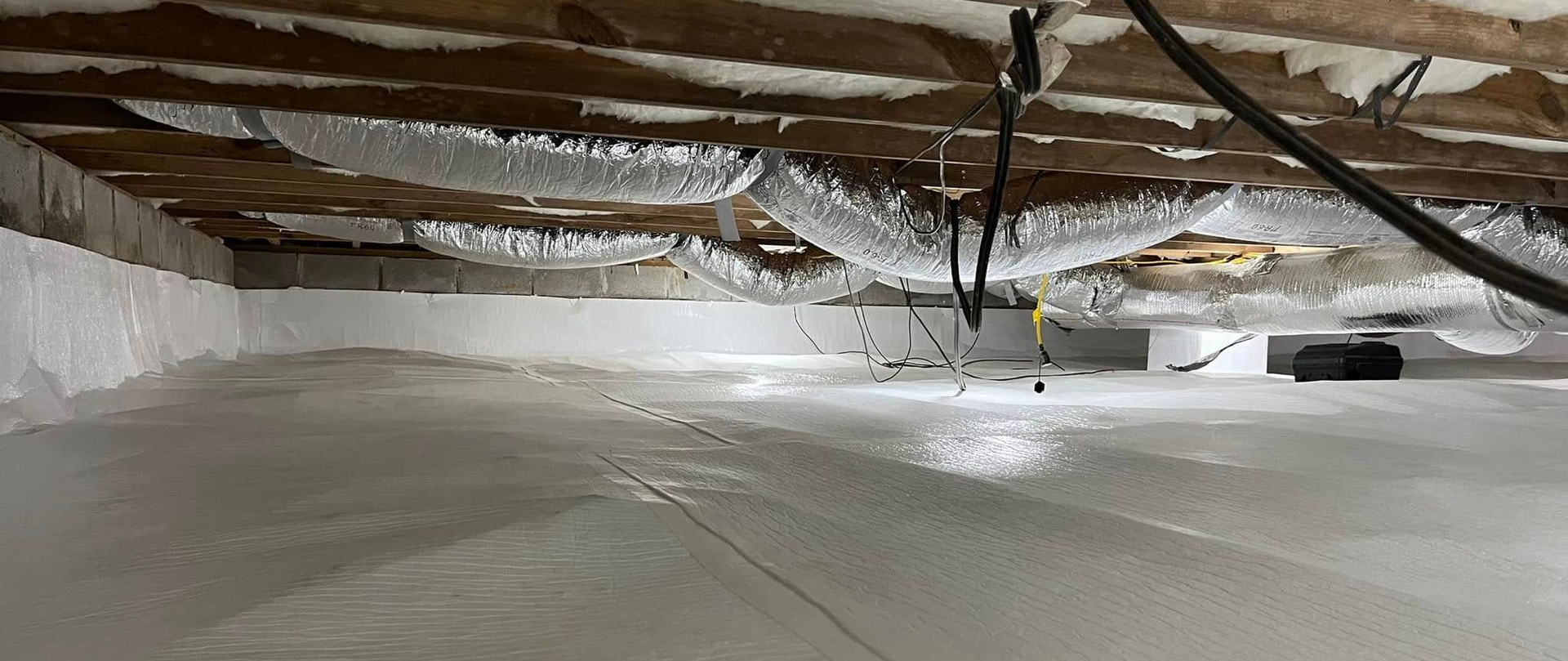
Protecting Your New Home Investment
Just because your home is new doesn't mean you can ignore what's happening underneath. Here's what you need to do:
- Regular Inspections
- Check for signs of moisture
- Look for fungal growth
- Monitor stored items
- Watch for insulation issues
2. Moisture Control
- Consider crawl space encapsulation
- Install proper vapor barriers
- Control ventilation
- Monitor humidity levels
3. Professional Assessment
- Get baseline readings
- Identify potential issues early
- Prevent expensive repairs
- Protect your investment
Get Ahead of Moisture Issues
Look, I get it. The last thing you want to think about in your new home is crawl space problems. But I've seen too many homeowners learn this lesson the expensive way. A small investment in prevention now can save you thousands in repairs later.
Don't wait until you see signs of damage in your living space. By then, you're already dealing with:
- Structural wood damage
- Expensive repairs
- Potential termite issues
- Compromised air quality
- Falling insulation
Here's what makes more sense: Let's inspect your crawl space before these issues develop. We'll check moisture levels, examine your ventilation system, and make sure your new home stays protected from the ground up.


